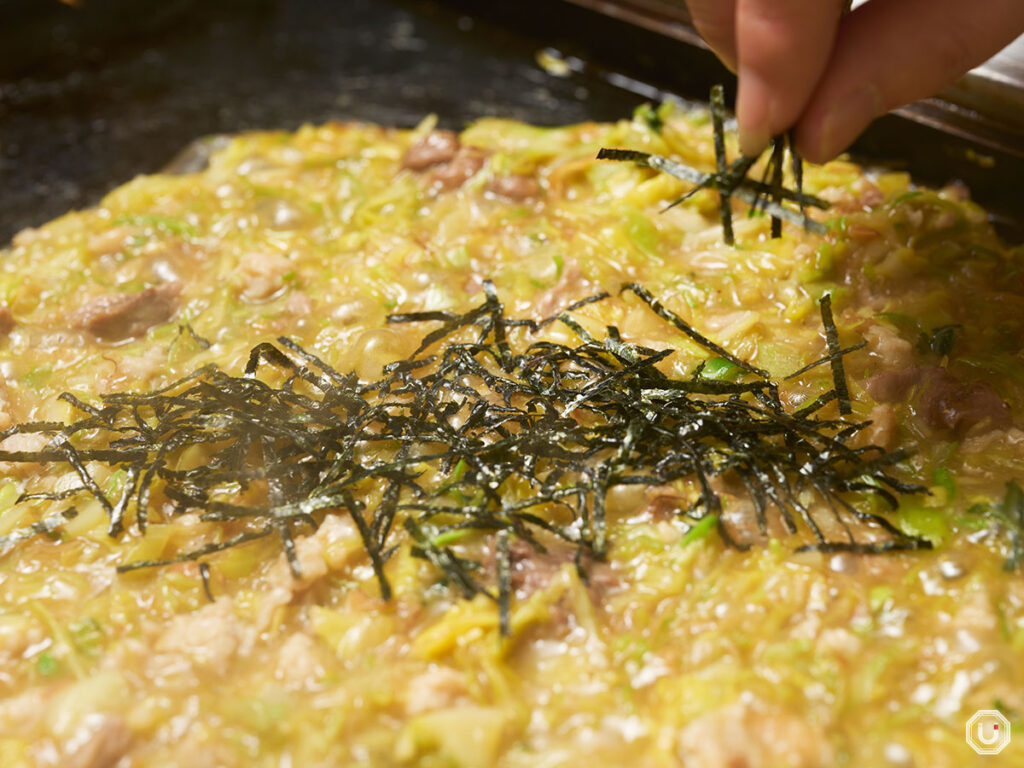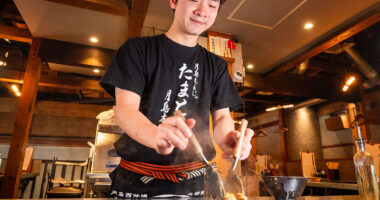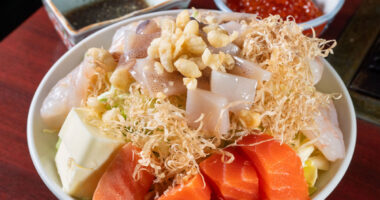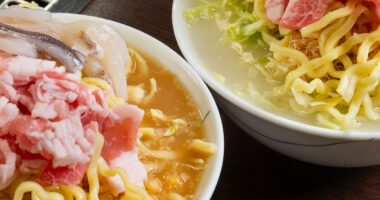Monjayaki, a savory pancake-like dish, originated in Japan during the Showa era (1926-1989) as a snack popular among children. In its early days, it was made by mixing wheat flour with water, seasoning it, and cooking it on a griddle.
Initially a simple, low-cost treat, monjayaki has transformed over time. Restaurants now serve monjayaki with unique, original concepts that go far beyond its humble beginnings.

Luxurious monjayaki at Kobore-ya in Tsukishima
Located in Tsukishima, “Tsukishima Monja Kobore-ya Honten” (hereafter referred to as “Kobore-ya”) offers monjayaki with a distinct high-end concept. Using carefully selected ingredients and seasonings from across Japan, their monjayaki is a far cry from the cheap snack of the past.
Luxurious monjayaki packed with fresh seafood
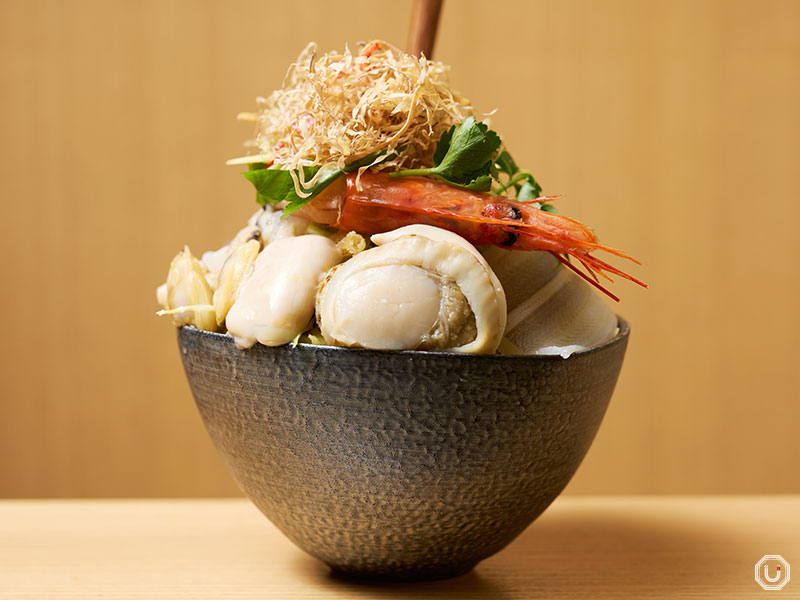
“こぼれや~月島一の豊洲海鮮盛りを昔ながらのソースで~” Kobore-ya – Tsukishima’s Best Toyosu Seafood Mix with Classic Sauce 2,079 JPY (tax included)
The dish “Kobore-ya – Toyosu’s Finest Seafood with Traditional Sauce” showcases the restaurant’s commitment to premium ingredients.
This signature monjayaki features an abundance of fresh seafood sourced daily from the market.
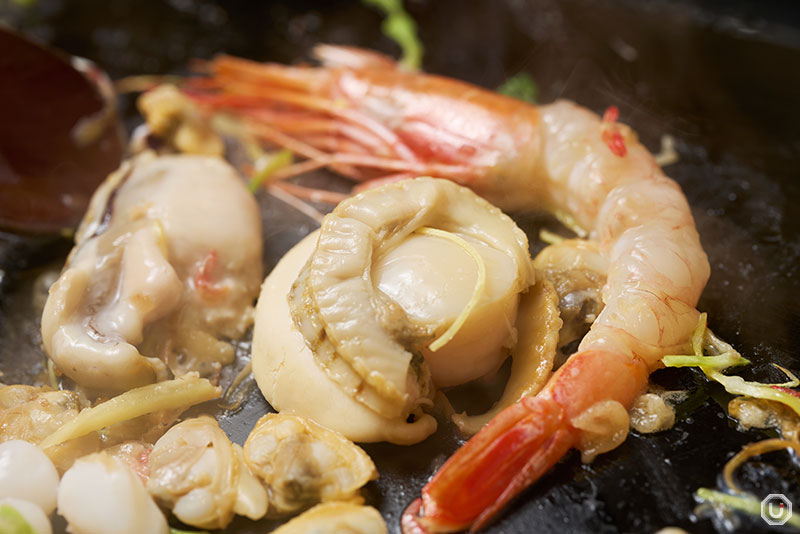
It includes shrimp, scallops, oysters, clams, and conger eel, making it a seafood lover’s delight. To fully enjoy the texture, the staff recommends cutting the seafood into large pieces rather than finely chopping them with the miniature spatulas.
The plump, bouncy texture of the seafood provides a burst of freshness. Cutting it just enough to maintain its texture allows the ingredients’ natural charm to shine through.
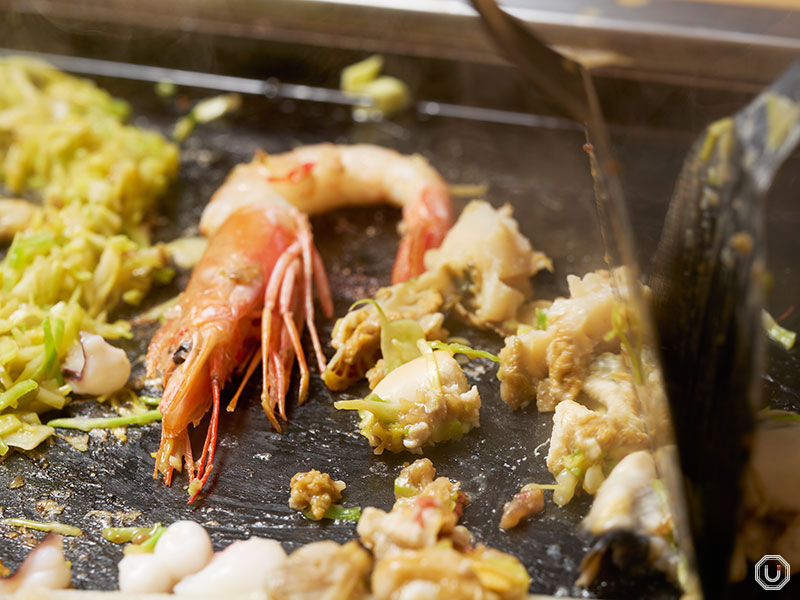
At the restaurant, customers can choose to cook the dish themselves or have the staff prepare it for them.
A special stock made from 10 ingredients – including pork bones, chicken bones, bonito flakes, kelp, and aromatic vegetables – further brings out the seafood’s umami.
It has a pronounced richness that blends with the umami of seafood, creating a bold and flavorful taste.
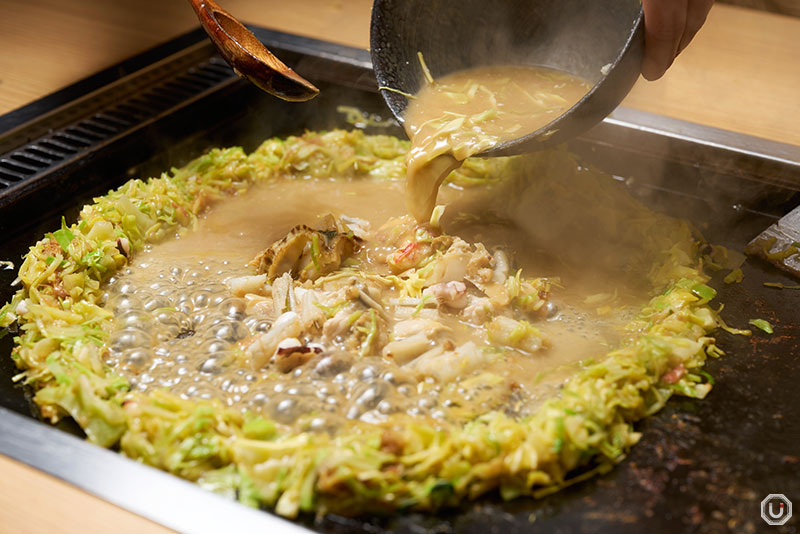
Kobore-ya’s batter is flavored with sauce
A tuna monjayaki that pairs well with a drink
Another dish, the “Maguro – Rare Tuna Cheek Meat and Negitoro with Fresh Soy Sauce,” highlights the restaurant’s creativity.
This dish features rare cuts of tuna cheek meat, known for its juicy, beef-like texture and rich flavor. In addition, negitoro (minced fatty tuna) is incorporated, making it a tuna-filled delight.
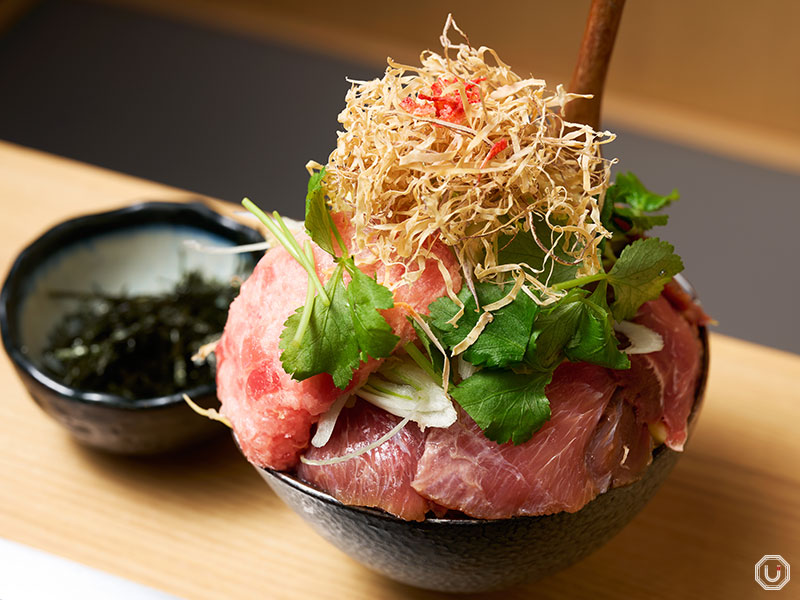
“まぐろ~まぐろ希少部位ほほ肉とねぎとろの生醤油味~,” Maguro – Rare Tuna Cheek Meat and Negitoro with Fresh Soy Sauce 1,859 JPY (tax included)
Grilling the negitoro and tuna cheek meat first releases an appetizing aroma reminiscent of beef steak. The seared tuna cheek even has an appearance that could easily be mistaken for beef.
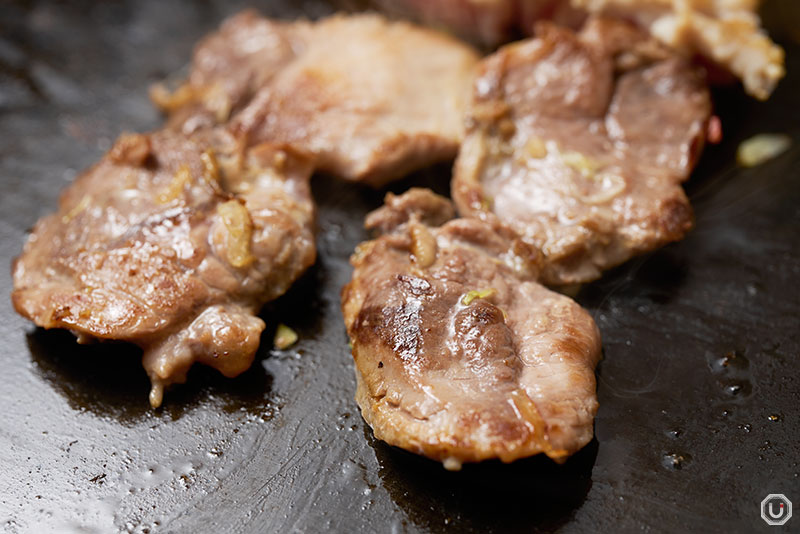
Rare cut: tuna cheek meat
The batter is seasoned with soy sauce, creating a salty flavor that pairs perfectly with alcohol. The fat from the cheek meat and negitoro adds a subtle sweetness, balancing the saltiness.
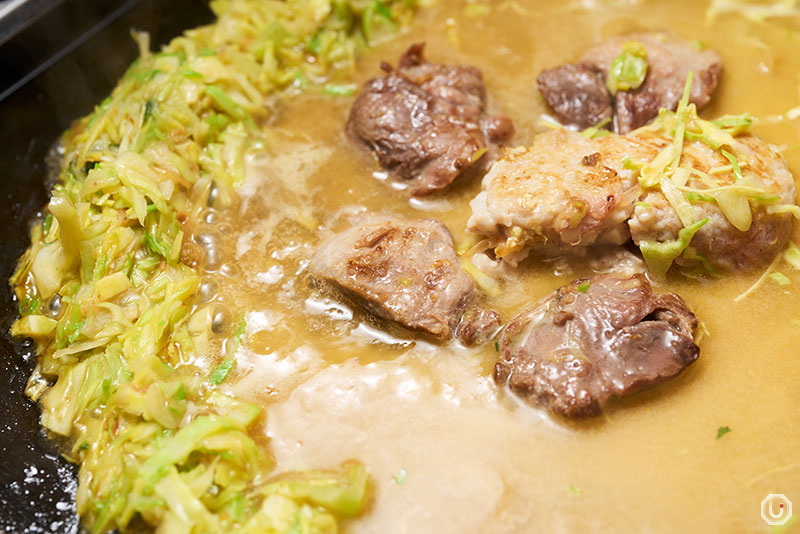
A side of dried nori seaweed is provided with the dish. Sprinkling it on top as a finishing touch elevates the dish, adding a delightful aroma of the sea and enhancing the overall taste experience.
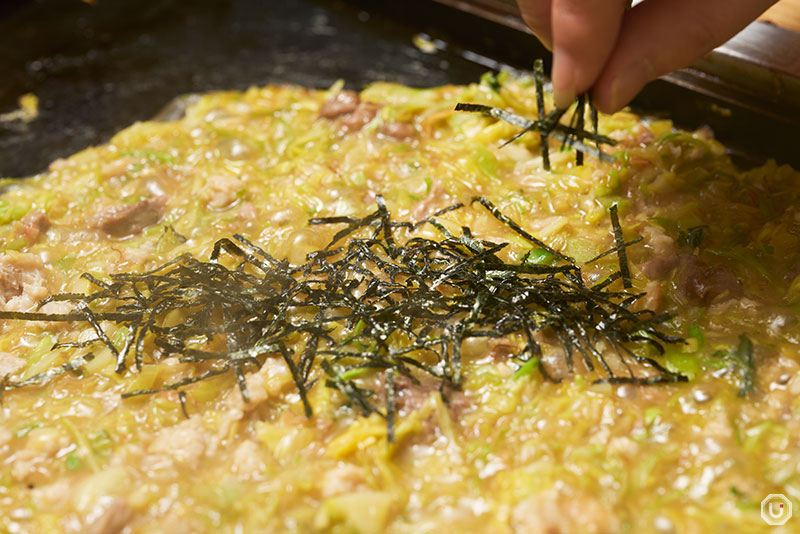
Level up the flavor of monjayaki with seasonings!
At Kobore-ya, great care is taken not only with the ingredients but also with the seasonings, and customers are encouraged to use those that are available at the table.
Among the essentials like salt, pepper, and sauce, the standout seasonings for monjayaki are ichimi (ground chili pepper) and powdered sanshō (Japanese pepper).
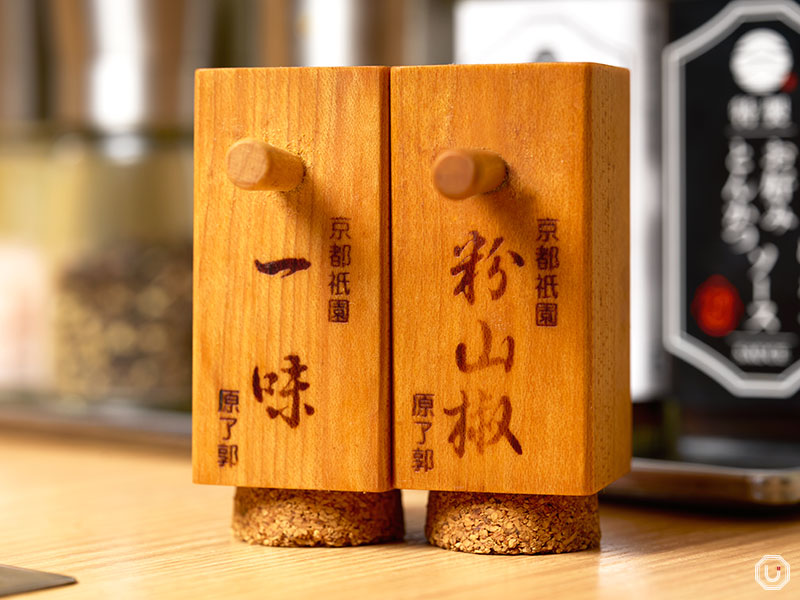
Both are from Hararyoukaku, a Kyoto spice maker established in 1685, used in high-end restaurants and homes alike. These seasonings enhance flavors without overpowering them.
Sprinkle a little on the tuna dish, and the sansho adds a refreshing, spicy note that enhances both the saltiness and sweetness. For a stronger kick, ichimi provides a direct, throat-tingling heat.
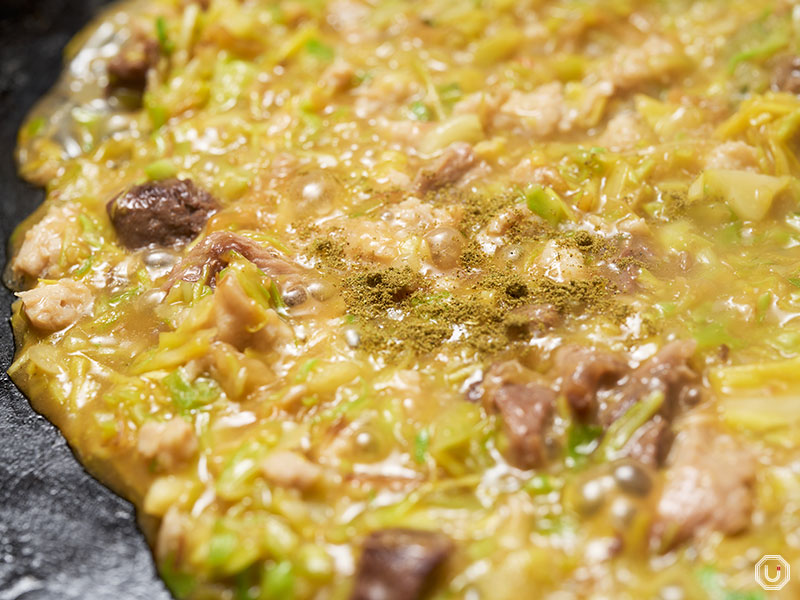
Monjayaki sprinkled with sansho
The restaurant’s five Tsukishima locations feature a wood-based design reminiscent of high-end Japanese restaurants. Private, separated table spaces allow for a relaxed dining experience.
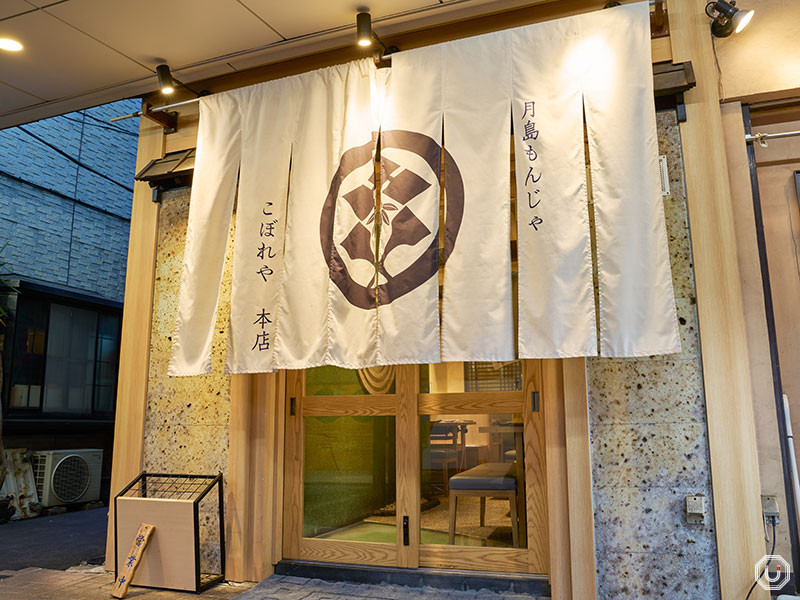
Exterior of Kobore-ya
Because of the premium ingredients used, most dishes range from 1,500 to 2,000 JPY. While this is on the higher end compared to typical monjayaki, the quality and originality make it well worth the price.
With its carefully selected ingredients and unique flavor profiles, Kobore-ya offers a monjayaki experience that is sure to leave diners satisfied.
Information
| Store name | 月島もんじゃ こぼれや 本店 Tsukishima Monja Kobore-ya Honten |
|---|---|
| Address | 3-16-9 Tsukishima, Chūō, Tokyo
|
| Access |
Tsukishima Station 4-minute walk from Exit 10
Kachidoki Station 6-minute walk from Exit A1
|
| Phone number | 03-3520-9976 |
| Reservations | Accepted Phone, Tabelog, GURUNAVI, Hot Pepper Gourmet, DM (Instagram) |
| Payment |
|
| Service charge / Table charge | None |
| Hours | Mon-Thurs. 12:00-15:00(last order: food 14:00, drinks 14:30), 17:00-23:00(last order: food 22:00, drinks 22:30) Fri. & days before nat’l holidays 12:00~15:00(last order: food 14:00, drinks 14:30), 17:00-24:00(last order: food 23:00, drinks 23:30) Sat. 11:00-23:00(last order: food 22:00, drinks 22:30) Sun. & nat’l holidays 11:00-22:00(last order: food 21:00, drinks 21:30) |
| Closed | No fixed holidays Unscheduled holidays |
| Seating | 26 table seats |
| Smoking | All seats are non-smoking |
| Official website | https://tsukishima-monja-koboreya.com/ |
| Other information |
|
※Menu contents, prices, store information, etc. are current as of April 2025.
